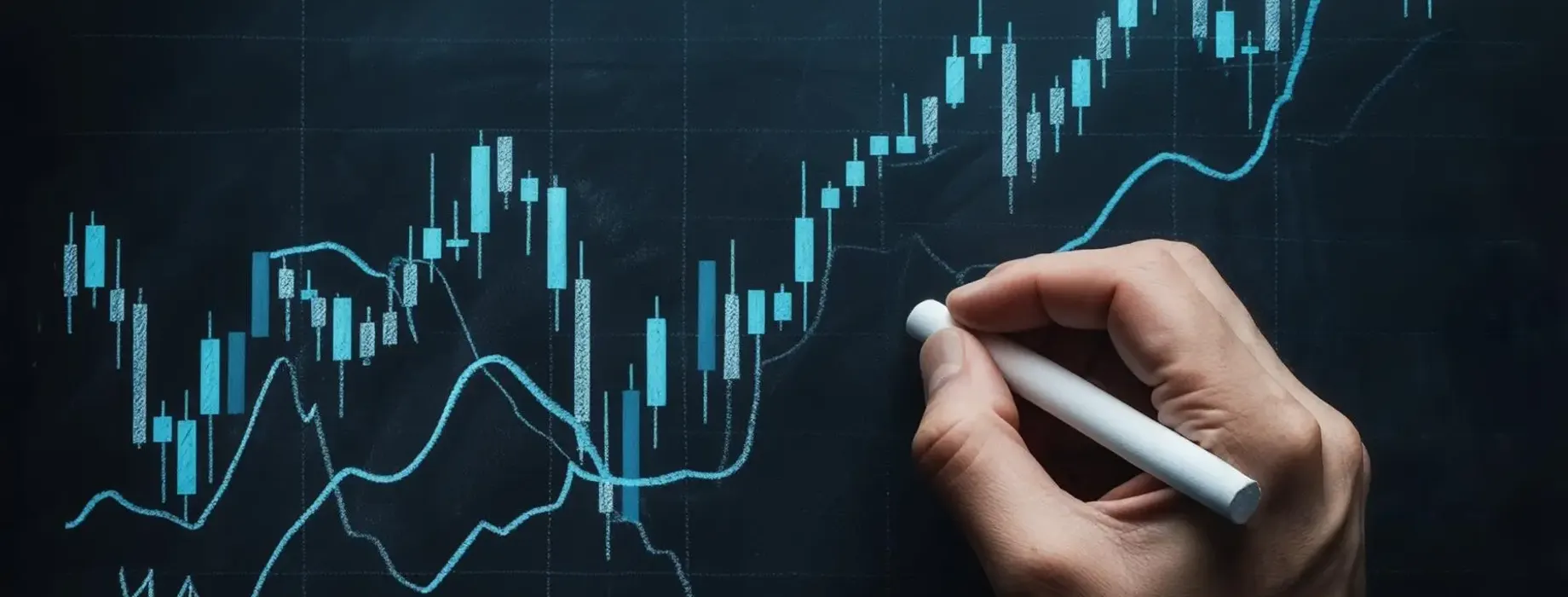- CFTC – Commitment of Traders Reports
https://www.cftc.gov/MarketReports/CommitmentsofTraders/index.htm - Barchart – COT Futures Large Traders Report
https://www.barchart.com/futures/commitment-of-traders - Investopedia – Commitment of Traders (COT) Definition
https://www.investopedia.com/terms/c/cot.asp - TradingView – COT Data Tools and Analysis
https://www.tradingview.com/scripts/commitmentoftraders/ - FinancialSource – How to Trade COT Data
https://www.financialsource.co/how-to-trade-non-commercial-cot-data/
Commitment of Traders (COT) Report AnalysisIntroduction

In the world of trading, understanding market direction isn't just about price charts — it's also about knowing who's behind the move.The COT report analysis (Commitment of Traders) is a powerful tool that reveals how major players — from institutional hedgers to large speculators — are positioned in key futures markets. Published weekly by the U.S. Commodity Futures Trading Commission (CFTC), this data provides a rare peek into the flow of institutional sentiment.
For traders dealing with forex, commodities, or even indices, the COT report offers practical value. It can:
• Signal when positioning is stretched and a reversal is near
• Confirm trends based on how commercial traders behave
• Help gauge market confidence or fear before price reacts
Yet, despite its value, many retail traders overlook it or misinterpret what the data shows.
This guide breaks down the core elements of the COT report, shows how to spot valuable shifts in positioning, and explains how to translate institutional sentiment into actionable trades.
Let’s uncover how professionals really position themselves — and how you can use that knowledge to sharpen your strategy.
What Is the Commitment of Traders (COT) Report?
At its core, the Commitment of Traders (COT) report is a transparency tool that sheds light on the market stance of major players operating in the futures markets. Issued weekly by the CFTC (Commodity Futures Trading Commission), it provides detailed insights into who is long, who is short, and by how much — across a wide range of assets.
Unlike indicators based on price action, this report reflects real positioning data. It shows how large institutions, professional speculators, and smaller retail participants are aligned in key markets.
Here’s how trader categories are classified:
• Commercials (Hedgers): These participants use futures contracts to protect against price swings. Think of them as oil producers hedging against falling prices or exporters shielding against currency moves.
• Large Speculators (Non-Commercials): Institutions such as asset managers and hedge funds fall into this group. Their main goal is to profit from directional trends, making their actions relevant for sentiment tracking.
• Small Traders (Non-Reportables): These are individual traders or small firms with relatively low open interest. Their trades aren’t considered market-moving but can reflect retail sentiment.
Each release includes:
• Position counts for both long and short contracts
• Net positions by group
• Open interest proportions
• Weekly changes in positioning
Although published with a slight delay (data as of Tuesday, released on Friday), the COT report is less about timing and more about understanding positioning pressure and institutional flows. Over time, shifts in positioning often precede major market turns — especially when speculative bets become one-sided.
How Institutional Positioning Affects Market Behavior
Institutional traders — such as hedge funds, asset managers, and commercial hedgers — don’t just participate in markets, they shape them. The positioning they take, and how they adjust that exposure, often becomes a leading indicator for retail traders who know where to look.
Here’s how institutional positioning influences market behavior:
1. Price Magnets and Crowded Trades
When speculative positions (non-commercials) grow excessively one-sided — for instance, everyone is net-long on gold — the market often becomes vulnerable to liquidation events. If price begins to move against the majority, stop losses trigger, fueling further momentum in the opposite direction.
This is how “price magnets” form: areas where large speculative interest is clustered often act as targets for mean reversion or shakeouts.
2. Hedging Pressure and Order Flow
Commercial participants don’t trade for profit — they hedge. When prices rise sharply, hedgers may enter heavy short positions to lock in favorable selling prices. This can apply downward pressure on markets and suppress momentum.
Understanding the hedging activity of commercials provides insight into potential supply-side resistance.
3. Position Shifts Precede Trend Reversals
A gradual but persistent change in institutional net positioning often precedes major price reversals. For example, if net-long positions from large speculators decline over several weeks, it could indicate fading bullish conviction — long before the chart shows weakness.
4. Sentiment Cycles
COT data captures the collective psychology of smart money. Large swings in net positions often mark the extremes of euphoria or fear — both of which tend to revert.
Tracking these extremes helps swing and positional traders time contrarian setups.
Trading Strategies Based on COT Report Data
Reading the COT report is one thing. Translating it into actionable trading strategies is where it becomes truly valuable. Below are practical methods used by professionals to incorporate positioning data into their edge.
1. Trend Confirmation via Speculative Positioning
If large speculators are consistently building long positions week after week — and price action supports the move — it can confirm the strength of an existing trend. In this setup:
• Enter in the direction of the trend
• Stay in the trade until speculative net positions flatten or reverse
• Avoid fighting the trend too early based on contrarian instincts
2. Contrarian Reversal Trades at Positioning Extremes
When net speculative positions hit multi-month or multi-year highs/lows, markets become ripe for reversals. These extremes often align with peak sentiment — a classic contrarian opportunity.
• Look for divergence between price and positioning
• Use confirmation tools like RSI, VIX, or sentiment indicators
• Time entries with reversal candles or key support/resistance levels
3. Commercial Hedger Signals
Some traders follow commercial traders, especially in commodity markets. If commercials are aggressively long and speculators are short, it may suggest value accumulation.
Example: In agricultural futures, commercials often buy heavily into panic-driven selloffs — long before a recovery becomes obvious.
4. Delta Shift Strategy
Track the weekly change in net positions. A sharp increase or flip in position may precede breakouts or breakdowns.
• If net longs increase by 30%+ in a single week, consider preparing for bullish continuation
• Combine with breakout levels or volume-based triggers
5. Multi-Timeframe COT Alignment
Align higher timeframe COT signals with shorter-term technical entries:
• Use monthly COT shifts as a macro backdrop
• Combine with H4 or daily chart setups for execution
• This hybrid method blends positioning data with tactical price action
Limitations and Misinterpretations of the COT Report
While the Commitment of Traders report is a powerful tool, relying on it blindly can lead to costly errors. Like any data set, it has inherent limitations — and understanding these blind spots is crucial for accurate interpretation.
1. Reporting Lag
COT data is released every Friday but reflects positions as of Tuesday. This means:
• You’re analyzing data that’s already 3 days old
• In volatile markets, much can change in that window
• It’s better used for spotting macro positioning shifts, not short-term scalping decisions
2. Doesn’t Reveal Trade Direction
COT shows net long or short positions — but not how or why they were opened:
• Was the position hedged via options?
• Is it part of a spread trade across multiple assets?
• Are market makers offsetting flow from clients?
Without context, position numbers can be misleading.
3. Lack of Granular Detail
The report aggregates traders into broad categories (Commercial, Non-commercial, Non-reportable), which:
• Doesn’t tell you which specific funds are acting
• Hides nuances between hedge funds, CTAs, or asset managers
• Misses the real flow coming from structured products or ETFs
4. Behavioral Bias in Interpretation
Traders often project their bias onto the report:
• Seeing a large short position and assuming a market will crash
• Ignoring structural reasons for positions (like hedging)
• Believing commercials are always “smart money” — which isn’t always true
5. Misuse in Short-Term Trading
COT reports shine in swing and macro setups — not intraday decisions.
Using them for short-term trades without confirmation tools (like order flow or volatility measures) is risky and unreliable.
FAQ — COT Report Analysis
1. How often is the COT report updated?
The report is published weekly, every Friday, by the CFTC (Commodity Futures Trading Commission), reflecting data as of Tuesday that same week.
2. Can retail traders use COT data effectively?
Yes — while it’s a macro tool, retail traders can use COT data to identify extreme positioning, confirm long-term trends, or spot early reversal zones, especially when combined with technical analysis.
3. What’s the difference between Commercial and Non-Commercial traders?
• Commercials are hedgers (e.g., producers or large institutions mitigating risk)
• Non-Commercials are speculators, including hedge funds and large asset managers
Watching how each group shifts positions can help infer broader market sentiment.
4. Is it possible to trade short-term using the COT report?
Not reliably. The COT report has a 3-day lag, so it’s not suited for intraday or short-term setups. Use it for macro confirmation, not for entry timing.
5. What markets does the COT report cover?
It includes futures and options data for major asset classes:
• Currencies (e.g., EUR, JPY)
• Commodities (e.g., gold, oil, wheat)
• Indices (e.g., S&P 500, Nasdaq futures)
• Treasury instruments
Conclusion: Using COT Data to Your Advantage
The Commitment of Traders (COT) report offers a rare glimpse into how large players — from hedge funds to commercial hedgers — are positioned across global markets.
When interpreted correctly, it can:
• Highlight extremes in sentiment
• Confirm longer-term trend direction
• Signal when a market may be overbought or oversold based on positioning
But it’s not a crystal ball.
Relying on COT data in isolation or using it for short-term trades is a mistake many retail traders make. Instead, think of it as a strategic compass — a way to align your trading bias with the movements of institutional money.
Want to master COT analysis?
Practice reading weekly shifts, overlay them with price action and volume, and combine with tools like volume spread analysis, macro trends, or key technical levels.
The deeper your contextual understanding, the more powerful this report becomes.
Next Step:
Review the latest COT report from CFTC.gov or your trading platform, pick one asset (like EUR/USD or Gold), and track how positions evolve week to week.
Stay objective. Track the smart money. And trade with alignment — not emotion.
